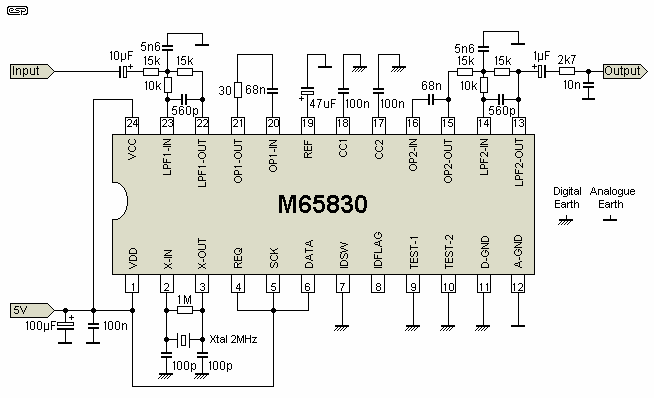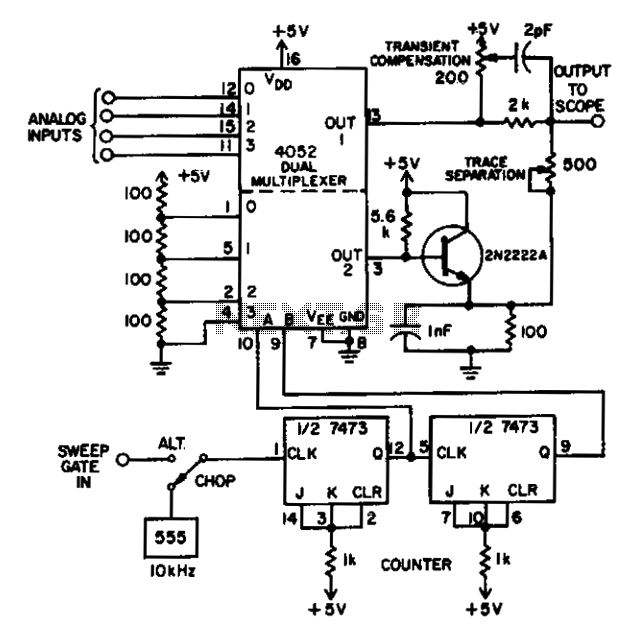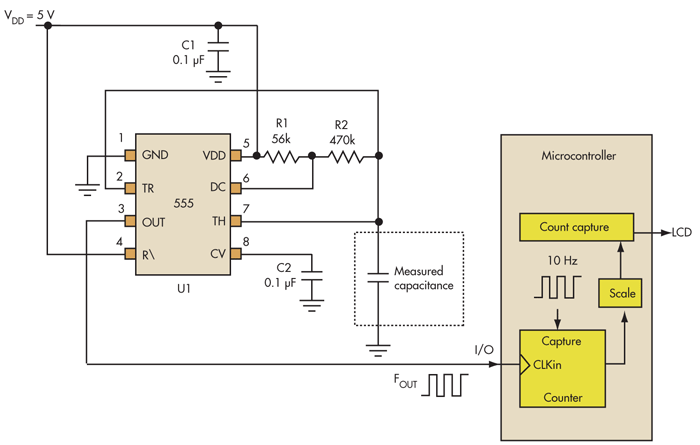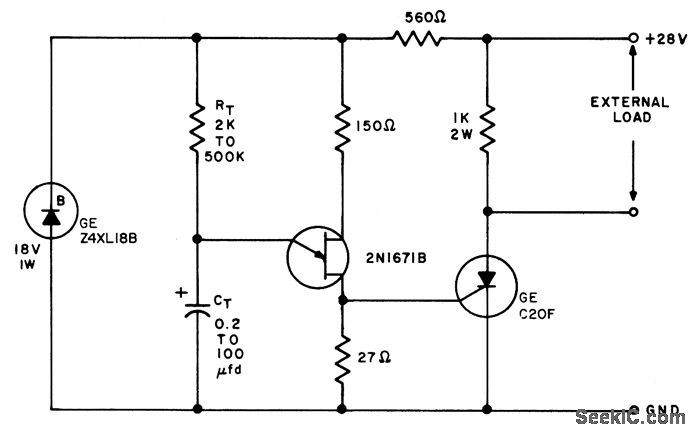
ANALOG DELAY LINEECHO AND REVERB
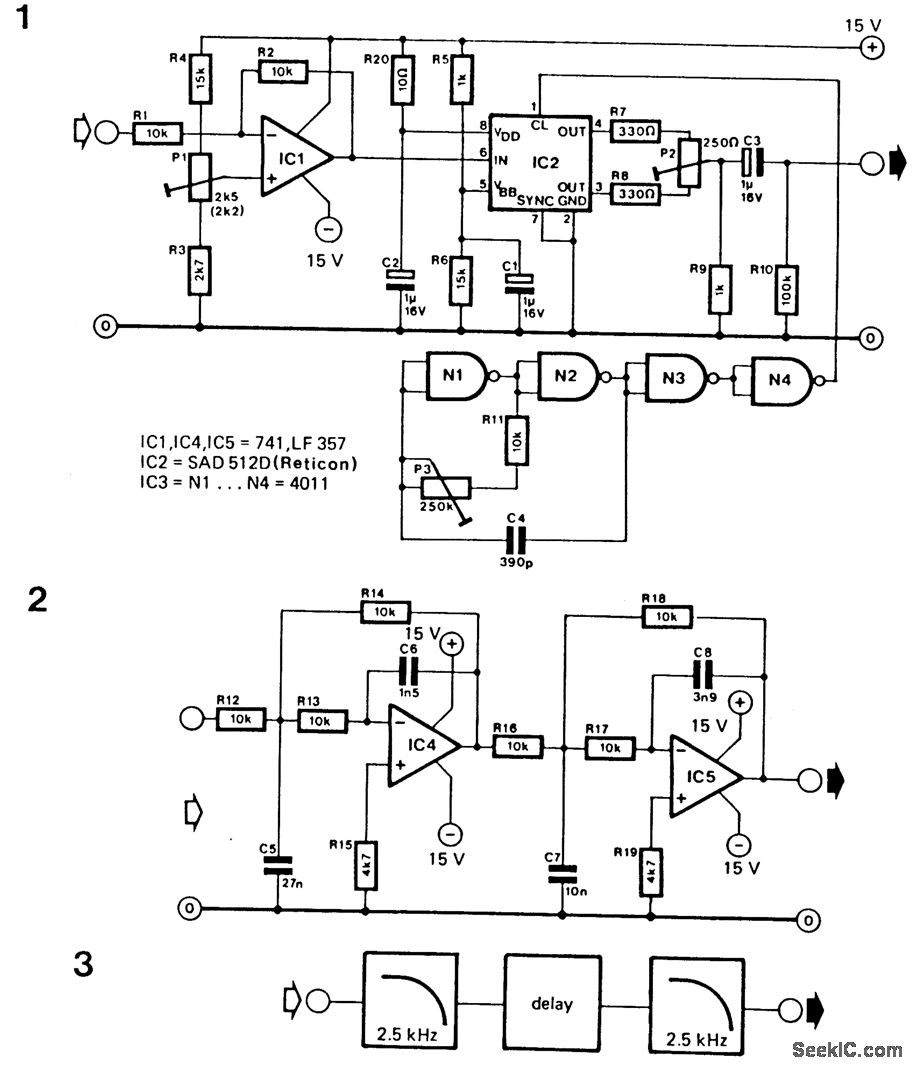
This circuit utilizes an SAD 512D (Reticon) chip, which serves as a 512-stage analog shift register. By adjusting the clock frequency within the range of 5 to 50 kHz, the delay time can be configured between 51.2 ms and 5.12 ms. It is essential that the clock frequency is at least twice that of the highest audio frequency.
The SAD 512D chip is designed to function as a delay line in audio processing applications. It operates by shifting analog signals through a series of stages, allowing for the introduction of a time delay. The clock frequency controls the rate at which the signal is shifted through the stages, thereby determining the total delay experienced by the signal.
In practical applications, the circuit can be used in various audio effects, including echo and reverb. The ability to vary the clock frequency provides flexibility in adjusting the delay time to suit different audio characteristics. For instance, a lower clock frequency results in a longer delay, which can be desirable for creating pronounced echo effects, while a higher frequency yields shorter delays suitable for subtler effects.
To ensure optimal performance, the clock frequency must be carefully selected based on the audio signals being processed. The requirement for the clock frequency to be at least double the highest audio frequency is crucial to prevent aliasing and ensure that the audio signal is accurately reproduced without distortion.
Overall, the SAD 512D circuit is a versatile component in audio electronics, enabling a wide range of delay-based effects through precise control of delay time via clock frequency adjustments. Proper implementation of this circuit can enhance the auditory experience in various applications, from musical instruments to sound design in multimedia projects.This circuit uses an SAD 512D (Reticon) chip, which is a 512-stage analog shift register. By varying the clock frequency between 5 and 50 kHz, delay time can be set between 51. 2 and 5. 12 ms. The clock fre-quency must be at least twice the highest audio frequency. 🔗 External reference
The SAD 512D chip is designed to function as a delay line in audio processing applications. It operates by shifting analog signals through a series of stages, allowing for the introduction of a time delay. The clock frequency controls the rate at which the signal is shifted through the stages, thereby determining the total delay experienced by the signal.
In practical applications, the circuit can be used in various audio effects, including echo and reverb. The ability to vary the clock frequency provides flexibility in adjusting the delay time to suit different audio characteristics. For instance, a lower clock frequency results in a longer delay, which can be desirable for creating pronounced echo effects, while a higher frequency yields shorter delays suitable for subtler effects.
To ensure optimal performance, the clock frequency must be carefully selected based on the audio signals being processed. The requirement for the clock frequency to be at least double the highest audio frequency is crucial to prevent aliasing and ensure that the audio signal is accurately reproduced without distortion.
Overall, the SAD 512D circuit is a versatile component in audio electronics, enabling a wide range of delay-based effects through precise control of delay time via clock frequency adjustments. Proper implementation of this circuit can enhance the auditory experience in various applications, from musical instruments to sound design in multimedia projects.This circuit uses an SAD 512D (Reticon) chip, which is a 512-stage analog shift register. By varying the clock frequency between 5 and 50 kHz, delay time can be set between 51. 2 and 5. 12 ms. The clock fre-quency must be at least twice the highest audio frequency. 🔗 External reference
